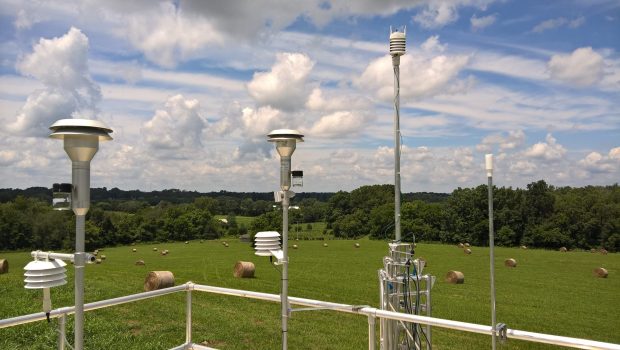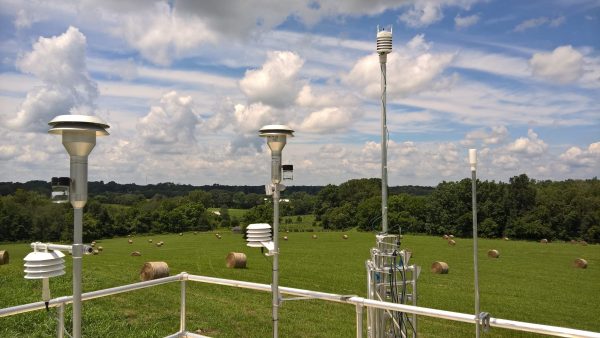Citywide Air Quality Monitoring Empowering Citizens to Take Timely Actions
Air is an invisible and dynamic medium. This makes it difficult to know if the air quality of a particular area meets the air quality standards.
Air quality is a complex interaction of several factors involving the chemical reactions, meteorological parameters, and emissions from natural and anthropogenic sources.
Special measures to reduce pollution are necessary for the welfare of the populations living nearby. Day by day increasing pollution level mandates some air standards to be in place looking at the dire need of air quality management. This makes air quality monitoring essential to measure air pollution frequently and assess pollution sources.
What is Air Quality Monitoring?
Air Quality Monitoring (AQM) is done to measure the pollution level of an area – indoors or outdoors. The results indicate the status of the quality of the air we breathe. An Air Monitoring System is a device which detects and measures the pollution in the surrounding. It represents the pollution data as concentrations of different pollutants – whether it is dust particles or gases.
There are two types of air quality monitoring systems currently available – manual and automatic.
Manual or AAQMS (Ambient Air Quality Monitoring System) system samples the ambient air, and then after a few days of data collection, it is transferred manually to the centre where the data is analyzed. The report is generated manually based on the analytics, and then finally, the data is archived to the server.
Automatic or CAAQMS (Continuous Ambient Air Quality Monitoring System) is the advanced version of AAQMS. It uses high-end technology like IoT for automated data collection and its transfer and analytics at the central server. The data transfer to the server is in real-time, and its interval is adjustable between 2-30 min. At the centre, the data is analyzed automatically with advanced AI and archived or used accordingly.
Why is Air Quality Monitoring Important?
“4.2 million deaths every year as a result of exposure to ambient (outdoor) air pollution.” – WHO
Clean air is the basic amenity when it comes to healthy living for mankind. Today poor air quality is one of the main reasons for several acute health diseases. That’s why it is essential to know the air quality of your locality, city, and nation to assess its impact on your health.
How does Air Quality Monitoring help Reduce Air Pollution?
AQM allows measuring all the ambient air pollutants to know their concentration. The monitoring starts with studying whether a particular area has an air pollution problem. It is achieved by evaluating and comparing the present pollution level of the area with the National Air Quality Standards.
Such information can help in assessing the pollution threshold breach to take preventive steps. Ambient air monitoring helps in understanding pollution status and trends. It also helps to estimate the efficiency of the pollution control strategies in place.
Pollution monitoring also helps in determining the air purification method required, for instance, dry deposition, dilution, precipitation, chemical treatment, etc.
How can Air Monitoring Help Take Timely Actions?
The objective of air quality monitoring is to quantify the ambient air pollution concentration of any region. This can help in assessing the situation beforehand to avoid any severe situations. The environmental data can be propagated publicly to help them take quick decisions against pollution exposure. This objective is accomplished by incorporating threshold limits for each parameter, beyond which the authorities are alerted of the situation.
Alerting Citizens: The concerned authorities can be alerted of the hazard level to take specific corrective or preventive actions towards an environmental issue. CAAQMS can also trigger actionable alerts in the form of push notifications, email notifications, and SMS notifications for the action team. This feature drastically reduces the problem-to-solution time using data-driven actions.
Pollution Trend Analysis: Collecting as much environmental data as possible can help in creating an inventory to analyze the pollution scenario. The data accumulated can be used to generate trends and patterns which can then be used for historical and comparative studies.
Impact Assessment: The historical data can assist in forecasting any imminent hazard aforehand. It can decipher the direction and magnitude of change in environmental condition for upcoming days. The trend study can help to identify any abnormalcy in the air quality and predict its future impact.
Pollution Heatmaps: Air pollution levels are higher near specific pollution sources such as traffic junctions, industries, mines, etc. These are called pollution hotspots. Using advanced technologies like AI and ML, air monitoring devices can generate pollution heatmaps. These maps can help in analyzing the pollution impact in an area. Whereas reverse modelling can help in detecting pollution hotspot. This hyperlocal pollution heatmap can help tap multiple geospatial applications.
Suggestive Actions for Citizens: AQMS can suggest healthcare actions for the residents based on the current environmental conditions of a locality. For instance, in case of excessive ambient particulate matter concentration, people can be advised to use mask and eye-wears. Whereas for excessive Carbon Monoxide levels, it can send an alert to stay indoors. Such data-driven healthcare actions are crucial for public healthcare.
Automating Environmental Actions: Automated AQMS can even help in automating environmental solutions. This can reduce manpower and human error risk. For example, odour neutralizers can be automated at waste treatment plants whenever the odour surpasses its threshold limit. Such actions can help in improving the quality of life of the residents.
How is Oizom tackling Air Pollution?
Oizom is an environmental IoT company offering data-driven environmental solutions for better decision making. With sensor-based hardware, Oizom monitors various environmental parameters like air quality, noise, odour, radiation, weather conditions, etc.
Oizom aims to monitor the air quality and pollution level to help strategize pollution controlling mechanism. Oizom’s prime ambient air quality monitoring device Polludrone is a state of the art solution for monitoring air quality. It Continuous Ambient Air Quality Monitoring System (CAAQMS).
It monitors 27 different environmental parameters related to air quality, noise, odour, weather, radiation etc. The solution covers dust particles, gaseous emissions, and meteorological parameters as well to offer 360-degree monitoring under a single umbrella.
Conclusion
A dense network of cost-effective sensor-based air quality monitors is thus, the need of the hour. We cannot wait for any catastrophic event to occur. Implementing air quality monitoring system, thus, can help in understanding the pollution levels in our vicinity. This can prepare us to take action before the situation worsens. The automated air monitors or CAAQMS are the best technology available currently to tackle air pollution before it gets too late.
Day by day increasing pollution level necessitates educating common people about the environmental conditions. Ubiquitous air monitoring can increase the awareness level among them which can help them to take steps to prevent pollution exposure on their day to day lives.
Public awareness can be achieved only after collecting all the environmental data and generating easier formats to be understood by everyone. Data-driven suggestive actions can be provided to the authorities to mitigate any significant future risk – natural or man-made.

















